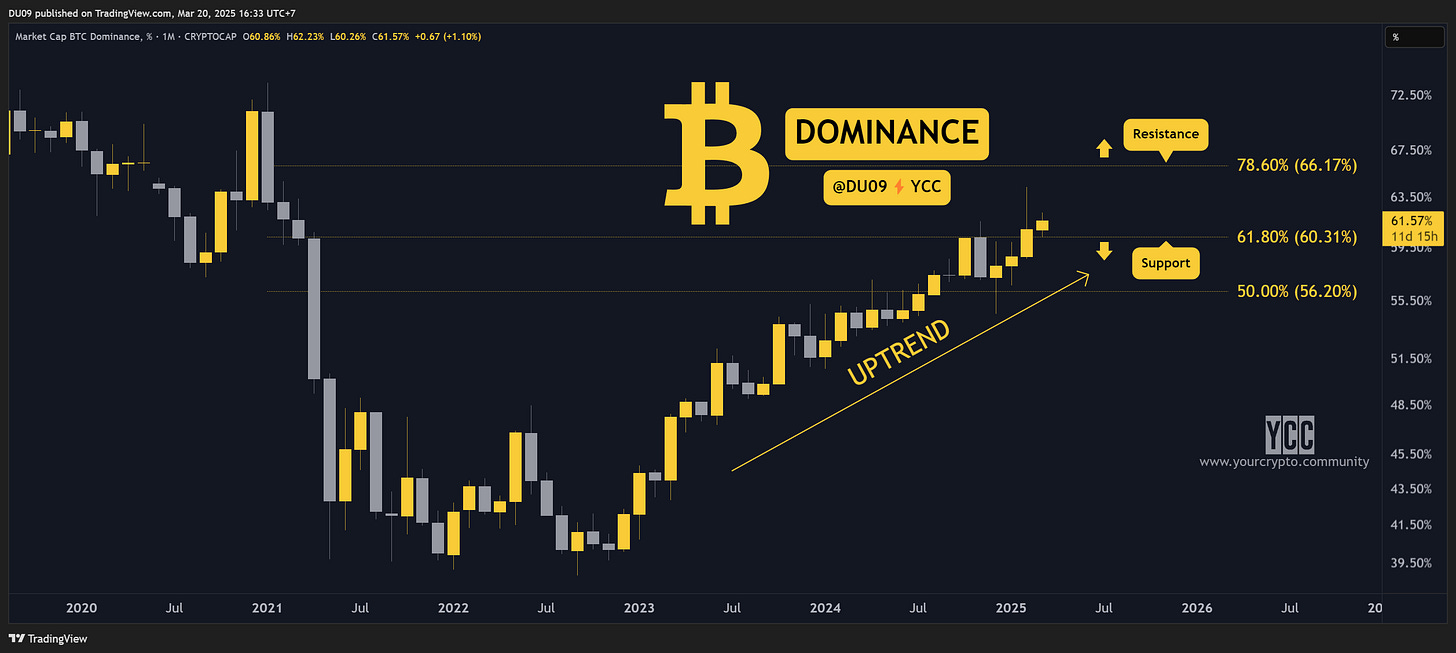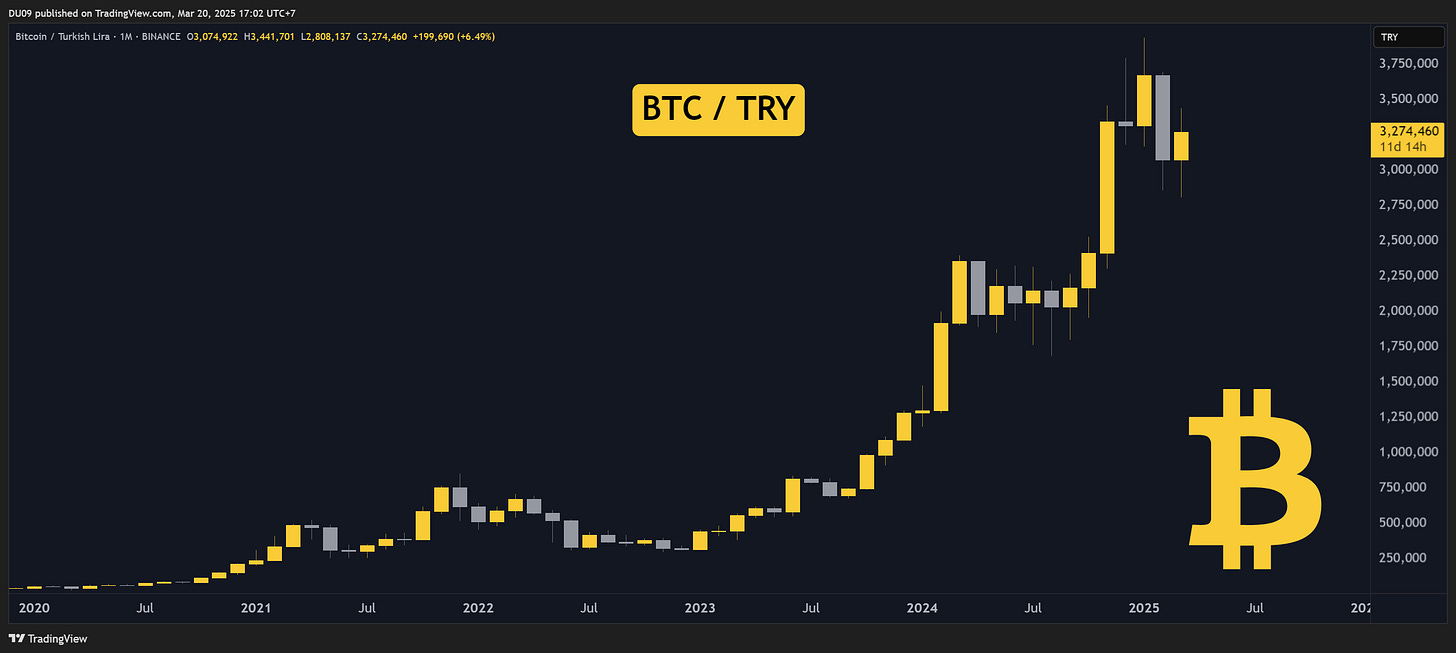Is the 4-year crypto cycle dead?
There is too much evidence to ignore at this point.
This crypto cycle has invalidated the assumption that everyone can be a winner every four years. Instead, we had a few winners and lots of losers.
Is the 4-year cycle dead?
In this article, I will answer this question, explain why the past two years have changed everything, and then make a very important recommendation. Let’s start.
This newsletter is sponsored by IAESIR, the premier platform offering unmatched returns, transparency, and scalability for investors worldwide.
Create an account and let AI do the trading!
What is the 4-year cycle?
This 4-year cycle has its roots in Bitcoin’s fundamentals. Every four years, it’s inflation is cut in half. Back in 2012, that first halving event reduced the issuance of new Bitcoin by 50% or from 50 BTC per block to 25 BTC.
This had a massive impact on Bitcoin’s supply and demand equilibrium, especially during its first two halving events from 2012 and 2016. In those times, the BTC price sky-rocketed as supply could not keep up with demand. Altcoins also followed.
However, with each new halving event, its impact on price diminished. The most recent Bitcoin halving from 2024 only reduced the issuance of new Bitcoin from 6.25 BTC to 3.12 BTC.
Considering that almost 95% of all Bitcoin is already in circulation (almost 20 million BTC out of maximum total of 21 million BTC), future halving events are quickly becoming negligible in terms of impact on price.
What used to work a few years ago, is no longer relevant today. You cannot print free money by buying any coin in crypto like in the past. Today, we have new factors which impact the crypto cycle in a much more fundamental way than Bitcoin’s halving schedule.
Time to level up your thinking! More on that next.
Why the past two years have changed everything?
There are two things that changed the crypto space in the past two years:
Crypto ETFs (exchange traded funds) went live
Altcoin inflation
In early 2024, Bitcoin got its first ETFs approved. This suddenly opened the world markets to Bitcoin. Anyone can now add Bitcoin to their retirement portfolios. This was not possible in the past.
What this represents is a new flow of huge amounts of money into Bitcoin that did not exist before. But there is a catch here.
As cash goes into Bitcoin ETFs, this puts a buy pressure on its spot prices. However, this liquidity never really leaves the Bitcoin ETFs to go into altcoins simply because there are no altcoin ETFs except Ethereum. And demand for Ethereum ETFs was a total letdown to date at $2.5 billion.
Almost all ETF liquidity went into Bitcoin at $40 billion in early 2025, see chart. No wonder, Ethereum has been falling against Bitcoin for years. Most altcoins are similar.
This is why for the past two years, everyone is still waiting for the “proper” altcoin season which may, in fact, never come. The altcoins rally that we had in November 2024 paled in comparison to previous cycles.
While SOL, XRP, BNB and TRX made new record prices, these were not so far from past highs and a majority of altcoins like Ethereum or Cardano failed to make a new all-time high. This is a clear signal that altcoins are lagging behind when compared to Bitcoin.
The cause?
Altcoin dilution.
There are simply too many altcoins today compared to previous cycles (read millions). I wrote a full article on that here. In a nutshell, the altcoins season was hijacked by Solana and its meme tokens. That basically sucked out all the liquidity from altcoins.
Soon after, while the music was loudest on Solana, Trump entered the scene in January 2025 and crashed the party. This put an end to the meme coin season with most memes crashing 80% to 90% since.
There is only so much money or liquidity in crypto and it is now being divided by millions of altcoins. Moreover, Bitcoin is eating a larger and larger share of the pie. Just look at the market dominance of BTC. It is the highest since 2021 at over 60%!
Altcoins are in a tough spot. They only account for 40% of the market and with millions of coins, there is not much money left for that altcoins season. You really need to pick your bets if you plan to play the altcoin game.
This brings me to an interesting analogy. In tennis, there are two types of games players engage in:
Those that play a Loser’s Game (Altcoins)
Those that play a Winner’s Game (Bitcoin)
In the first case, the tennis players must do their best to reduce their mistakes since simply by doing that they will beat most of their competitors which make many mistakes. It’s a losers game, because losing less points than the majority makes you a winner.
In the second case, the tennis players are the best of the best. Their games are no longer about losing less points, but more about skill and being a winner. This is a winners game played by winners (top players).
In crypto, if you play the altcoin game you’re playing a losers game and to win there you need to pick the altcoin which loses less than the rest. However, you can choose to totally ignore that and play a winners game by buying Bitcoin instead!
Time to look at Bitcoin and why it will continue to win, regardless of the 4-year cycle narrative, which based on the past two years, is no longer relevant anyway.
Upgrade to Patrons Pro to access our exclusive content!
This role also grants lifetime access to our premium discord channels.
Why Bitcoin remains king?
I promised you a recommendation at the start of this article.
Aim to play a winner’s game by focusing on Bitcoin. That’s how you win over time. Keep your exposure to the loser’s game (altcoins) limited and manageable in terms of risks. Anything less and it can get ugly very fast.
With that said, here are 10 reasons why betting on Bitcoin makes you a winner.
Fiat (dollar) dilution - the central banks can’t stop printing fiat money. Just look at Gold. It’s breaking record after record. Bitcoin did the same in 2024 and that 100k resistance will eventually break too. Be patient.
Inflation - it’s easy to print new dollars from thin air, but you can’t print Bitcoin from thin air. This makes Bitcoin the hardest money on the planet. That’s where you store your wealth.
Quantitative tightening is about to end - that means quantitative easing will soon follow which makes dilution and inflation of fiat money certain.
The Global Money Supply is making all-time highs - it’s not just the US that’s diluting their citizens, everyone is doing it. The only thing that differs is the speed of it. Here is Bitcoin’s price in Turkish liras. Ouch!
Gold - its record breaking price action seems to have no end in sight since late 2023. What’s better than Gold? Bitcoin. Why is everyone buying Gold? Because of points 1 to 4. Only a matter of time until they embrace BTC too.
Crypto ETFs - it’s rather misleading to call them crypto ETFs when 95% of that money goes into Bitcoin ETFs. This ratio is even more skewed in BTC’s favor than its market dominance at 60%.
Altcoins dilution - you can’t dilute Bitcoin. You can’t copy paste it since you can’t copy paste its security and mining equipment which is worth tens of billions.
Nation states are buying Bitcoin - Look at Salvador. More and more countries are adding Bitcoin into their sovereign wealth funds.
US Crypto Strategic Reserve - that basically means Bitcoin. Enough said.
You have no better alternative - the only sound money today are Bitcoin and Gold, with the former having clear advantages.
While Bitcoin’s 4-year cycle will continue to exist, its impact will, at best, be marginal on its price. In this sense, that narrative is dead. However, the reasons to continue to buy Bitcoin have become stronger than ever.
I cannot say the same about altcoins.
That game has become harder and picking winners there is a losers game over time. It’s the exact opposite of betting on Bitcoin and has more in common with betting on the Turkish lira to protect your wealth. We know how that ended.
This newsletter is made possible with the generous support of our Patrons and partners. Upgrade your experience by becoming a Patron for lifetime access to our exclusive private alpha! Details are available on our Patrons page. All info is provided for educational purposes only and is not financial advice.






